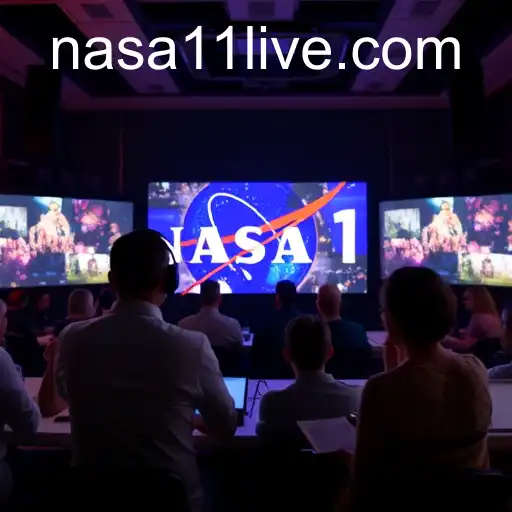The Rise of Live Streaming: A Closer Look at 'NASA11'
In recent years, live streaming has revolutionized the way we consume content online. From entertainment to education, this technology has found its way into diverse sectors, creating new opportunities for real-time engagement and interaction. One interesting concept within this domain that has caught the attention of many is nasa11. Although 'nasa11' may sound like a scientific term, in the context of live streaming, it represents a unique identifier reflecting on efficiency and innovation.
The Emergence of Live Streaming
Live streaming is a technology that allows users to broadcast video content in real-time over the internet. Unlike traditional broadcasting, live streaming offers an interactive interface where viewers can engage with the content and the broadcaster. This immediate form of communication has changed the dynamics of content consumption, making it hyper-accessible and spontaneous.
What Fuels the Demand for Live Streaming?
The growing demand for live streaming is driven by several factors. Among these are the rapid advances in internet technology, the proliferation of smart devices, and a cultural shift towards on-demand content. Moreover, platforms like Twitch, YouTube Live, and Facebook Live have made it easier for users to broadcast and monetize their content, transforming live streaming from a niche activity into a mainstream phenomenon.
The Concept of 'NASA11' in Live Streaming
The term 'nasa11' in the live streaming world is an intriguing concept that symbolizes the push towards optimizing streaming technology. It signifies a blueprint for achieving a seamless live streaming experience that blends high-quality delivery with efficient use of resources. Understanding 'nasa11' includes exploring server configurations, content delivery networks (CDNs), and effective bandwidth utilization.
Technological Innovations
Nasa11 draws attention to the use of adaptive bitrate streaming technology, which automatically adjusts video quality based on the viewer's internet speed. This ensures that viewers experience minimal buffering, maintaining high engagement levels. Furthermore, cloud-based infrastructure plays a crucial role in scaling live streaming services, allowing broadcasters to handle massive amounts of live traffic.
Impact on Entertainment and Beyond
Entertainment has been significantly transformed by live streaming. Musicians, artists, and performers now use platforms to reach global audiences without geographical limitations. This shift has democratized content creation, where anyone with a camera and internet access can become a content producer.
Educational and Professional Applications
Beyond entertainment, live streaming has penetrated educational environments, offering virtual classrooms and online workshops that broaden learning opportunities. It is also being adopted in professional settings for webinars, conferences, and training sessions, illustrating its versatility and significance in many fields.
The Cultural Shift Towards Real-Time Interaction
The advent of live streaming has encouraged a cultural move towards real-time, intimate interactions. Unlike pre-recorded content, live streaming fosters a sense of community and immediacy. Viewers can ask questions and receive answers instantly, fostering a deeper connection between content creators and their audience.
The Role of Social Media
Social media platforms have been instrumental in integrating live streaming features, further boosting their engagement metrics. Instagram and TikTok have incorporated live streaming to boost user interaction and platform loyalty, highlighting the strategic role of live broadcasts in social networking.
Challenges and Future Prospects
Despite its benefits, live streaming comes with challenges. Issues like latency, piracy, and content moderation present hurdles that need addressing. Furthermore, ensuring accessibility and inclusivity remains critical for its continued growth and effectiveness.
As technology evolves, it is anticipated that live streaming will integrate more augmented and virtual reality elements, enhancing viewer experience even further. This evolution sets the stage for a future where live engagement becomes more immersive and dynamic, potentially reshaping the digital landscape.
In conclusion, whether exploring the technicalities of 'nasa11', experiencing a live concert from the comfort of your home, or attending a virtual seminar, live streaming embodies a transformative force in the digital age. Its continuous growth and adaptation promise exciting developments in the years to come.











